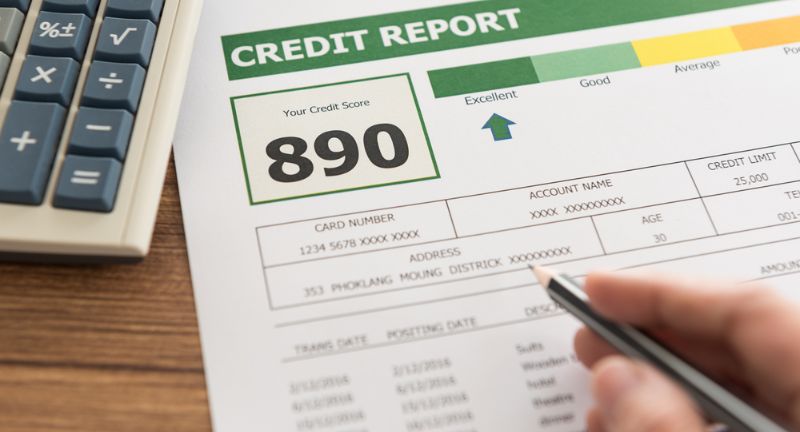NEWS
Top Ways to Slash Your Car Insurance Premium
Published
9 months agoon

Shutterstock
Navigating the complexities of insurance can be daunting, but with the right knowledge and strategies, you can secure the best coverage at the most competitive rates. Whether you’re insuring your car, home, or other valuable assets, understanding key principles and tactics is essential. From comparing quotes to leveraging discounts, there are numerous ways to optimize your insurance experience. In this guide, we’ll explore actionable tips and insights to help you make informed decisions and save money on your insurance premiums. Let’s embark on a journey to demystify insurance and empower you to protect what matters most.
Benefits of Completing a Defensive Driving Course

Shutterstock
Taking a defensive driving course can significantly improve your driving skills and safety awareness. Additionally, it may qualify you for a discount on your insurance premiums. These courses typically cover important topics like collision avoidance, safe driving practices, and an understanding of traffic laws. It’s advisable to check with your insurer before enrolling to confirm that they recognize the specific course and offer discounts upon its completion.
How to Choose a Car with Lower Insurance Costs

Shutterstock
Before purchasing a car, it’s important to research insurance costs for different makes and models to find one that fits your budget. Cars that have a lower risk of theft, lower repair costs, and high safety ratings generally come with lower insurance premiums. Factors such as the car’s age, make, and model, along with its safety features and theft deterrents, can influence insurance rates. Consider consulting with your insurance agent to determine the potential insurance costs of your preferred vehicle.
Selecting the Optimal Payment Plan

Shutterstock
Opting to pay your insurance premium annually or semi-annually instead of monthly can lead to potential savings. Many insurers provide discounts or waive processing fees for policyholders who choose these less frequent payment options. Although monthly payments may appear more manageable, they typically incur higher overall costs due to extra fees. Assess your budget and financial objectives to identify the most cost-effective payment plan that suits your insurance needs.
Consider Group Insurance

Shutterstock
Some employers, professional organizations, or alumni associations offer group insurance plans with discounted rates. Group insurance plans leverage the collective buying power of a group to negotiate lower premiums and enhanced coverage options. If you’re eligible for group insurance through your employer or affiliation, compare the benefits and costs to individual insurance plans. Group insurance may offer cost savings and additional perks, such as flexible payment options or specialized coverage tailored to the group’s needs.
Consider Usage-Based Insurance

Shutterstock
Usage-based insurance, also known as telematics insurance, leverages technology to observe your driving habits and adjust your premiums accordingly. By installing a device in your car or using a mobile app, insurers can monitor aspects such as mileage, speed, and braking patterns. If you consistently exhibit safe driving behaviors, you might qualify for reduced rates. However, keep in mind that there may be privacy concerns related to the monitoring of your driving habits.
Strategies for Managing Teenage Driver Insurance Costs

Shutterstock
Including teenage drivers on your insurance policy can lead to substantial premium hikes, attributed to their limited driving experience and increased likelihood of accidents. To manage these costs, consider restricting teenage driving privileges within your household. Another option is to place them on a separate policy with higher deductibles or coverage limits. Promote responsible driving habits and stress the significance of keeping a clean driving record to help lessen the insurance rate impact when adding teenage drivers.
Benefits of Parking in a Garage

Shutterstock
Parking your car in a garage or a secured location can significantly reduce the risks of theft, vandalism, and damage caused by weather conditions. Many insurance companies provide lower premiums for vehicles that are parked in garages, as opposed to those left on the street or in open lots. If you have access to a garage, it’s advisable to use it to safeguard your vehicle and potentially benefit from insurance discounts. Make sure the garage is structurally sound and properly secured to maximize its effectiveness in reducing insurance costs.
Ask About Discounts

Shutterstock
Inquire with your insurance provider about available discounts that you may qualify for. Many insurers offer discounts for various reasons, such as being a good student, having a certain profession, or being a member of specific organizations. Additionally, some companies provide discounts for safety features installed in your vehicle, bundling multiple policies, or maintaining a good driving record. By asking about available discounts, you can potentially reduce your insurance premiums without sacrificing coverage.
Regularly Review Your Insurance Coverage

Shutterstock
It is important to periodically review your insurance coverage to ensure it aligns with your current needs and circumstances. Life changes, such as purchasing a new car or relocating, can affect your insurance requirements. Evaluate whether you are paying for unnecessary coverage, such as comprehensive or collision insurance on older vehicles. By tailoring your insurance to your current situation, you can potentially save money on premiums while still maintaining adequate protection.
Maintain a Good Driving Record

Shutterstock
Continuously driving safely and avoiding accidents and traffic violations can help keep your insurance premiums low. Insurers typically offer lower rates to drivers with clean driving records, as they pose less risk of filing claims. Practice defensive driving techniques, obey traffic laws, and avoid distractions while driving to maintain a spotless driving record. If you do receive a citation or get involved in an accident, take steps to mitigate its impact on your insurance rates, such as attending traffic school or negotiating with your insurer.
Shop Around for Insurance

Shutterstock
When seeking insurance, it’s important not to settle for the first quote you get. Take the time to compare quotes from various insurance companies to find the best deal that provides sufficient coverage at a competitive rate. Additionally, make sure to evaluate the reputation and financial stability of the insurance providers you’re considering to ensure they can fulfill their obligations in the event of a claim.
Practice Safe Driving

Shutterstock
Keeping a clean driving record, free of accidents and traffic violations, is one of the best ways to maintain low insurance premiums. Safe driving habits not only lessen the chances of accidents but also show insurers that you are a responsible driver. Even minor infractions can affect your rates, so always practice defensive driving techniques and follow traffic laws.
Opt for a Safer Car

Shutterstock
Cars equipped with advanced safety features, such as anti-theft devices, airbags, and collision avoidance systems, may qualify for lower insurance rates. These safety features not only reduce the risk of accidents but also minimize the severity of injuries and damage in the event of a collision. When shopping for a new car, prioritize models with the latest safety technologies to potentially lower your insurance premiums. Be sure to inform your insurer about any safety features installed in your vehicle to maximize available discounts.
Opt for a Higher Deductible

Shutterstock
Selecting a higher deductible can reduce your insurance premiums because you agree to cover more out of pocket before your insurance takes effect. However, ensure that you can comfortably afford the higher deductible should you need to file a claim. It’s important to find a balance between the deductible amount and the potential savings on premiums, considering your financial situation and risk tolerance.
Enhance Vehicle Safety with Added Features

Shutterstock
Installing additional safety features in your vehicle can significantly improve your safety while potentially qualifying you for insurance discounts. Implementing anti-theft devices, alarms, and tracking systems can deter theft and may result in reduced premiums. Moreover, advanced safety technologies like automatic emergency braking and lane departure warning systems help prevent accidents, offering further potential savings on insurance costs. Be sure to notify your insurance provider about any new safety enhancements to take full advantage of available discounts.
Adjust Coverage for Older Cars

Shutterstock
If you own an older vehicle with a low market value, consider adjusting your insurance coverage to save money. Comprehensive and collision coverage may not be cost-effective for older cars, especially if the premiums exceed the vehicle’s value. Evaluate the potential costs of repairing or replacing your car compared to the savings gained from dropping these coverages. By customizing your coverage to match your car’s value, you can reduce unnecessary expenses while maintaining adequate protection.
Avoid Modifying Your Car

Shutterstock
Modifying your car with aftermarket accessories or performance enhancements can increase insurance costs. Insurers may view modifications as increasing the risk of accidents or theft, leading to higher premiums. Additionally, certain modifications may not be covered by standard insurance policies, requiring additional coverage or endorsements. Before making any modifications to your vehicle, consult with your insurance provider to understand how they may impact your coverage and premiums.
Reduce Driving to Save on Insurance

Shutterstock
Many insurance companies provide low-mileage discounts to policyholders who drive less each year. By minimizing your driving through carpooling, public transportation, or combining errands, you might become eligible for these discounts. Make sure to give precise mileage details to your insurer, as they might check it periodically to confirm your eligibility for the discount.
Maintain a Good Credit Score

Shutterstock
Many insurance companies use credit scores as a factor in determining premiums. By maintaining a good credit score, you can potentially lower your insurance rates. To improve your credit score, pay bills on time, keep credit card balances low, and monitor your credit report regularly for errors. Remember that not all states allow insurers to use credit scores as a rating factor, so check your state’s regulations.
Maintain a Good Relationship with Your Insurer

Shutterstock
Building a positive relationship with your insurance company can sometimes result in discounts or special offers. Insurers may reward loyal customers with lower premiums, enhanced coverage options, or priority claim handling. Stay in communication with your insurer, promptly report any changes or incidents, and inquire about available discounts or loyalty programs. By demonstrating loyalty and proactive communication, you may unlock additional savings on your insurance premiums over time.
Bundle Policies

Shutterstock
Bundling your insurance policies, such as car, home, and renter’s insurance, with the same provider can often result in significant discounts. Insurance companies reward customer loyalty and offer the convenience of managing multiple policies under one roof. However, before bundling, ensure that the bundled policies still meet your coverage needs and that the overall cost is lower than purchasing separate policies from different insurers.
Ensure Ongoing Insurance Coverage

Shutterstock
To avoid potential premium hikes, it is essential to maintain uninterrupted insurance coverage. Insurance companies may interpret coverage gaps as an increased risk, potentially resulting in higher rates when you renew your policy. When changing insurance providers, ensure there is no overlap or gap in coverage dates to guarantee continuous protection. Maintaining consistent insurance coverage showcases responsibility to insurers, which can contribute to more stable premiums.
Conclusion

Shutterstock
In conclusion, navigating the world of insurance requires diligence and informed decision-making. By implementing the strategies outlined in this guide, you can effectively manage your insurance needs while maximizing cost savings. Remember to regularly review your policies, explore available discounts, and adjust coverage as necessary to ensure you’re adequately protected without overpaying. With these tips at your disposal, you can approach insurance with confidence and peace of mind, knowing you’ve taken proactive steps to safeguard your assets and financial well-being.
More From Financially+
-


35 Unforgettable Fads Only 60s Kids Will Remember
-


30 Hot Home Decor Trends to Transform Your Space in…
-


25 U.S. Cities Perfect for Car-Free Living
-


20 Policies Conservatives Support That Are Wrecking The Middle Class
-


Does Gen Z Spell The End Of The Republican Party?
-


23 Fun Facts You Never Knew About The Penny
-


20 Tell-Tale Signs Someone Has Poor Money Management
-


26 Splurge Worthy Items That Are Truly Worth Every Penny
-


24 Everyday Groceries with Sky-High Price Tags Now
